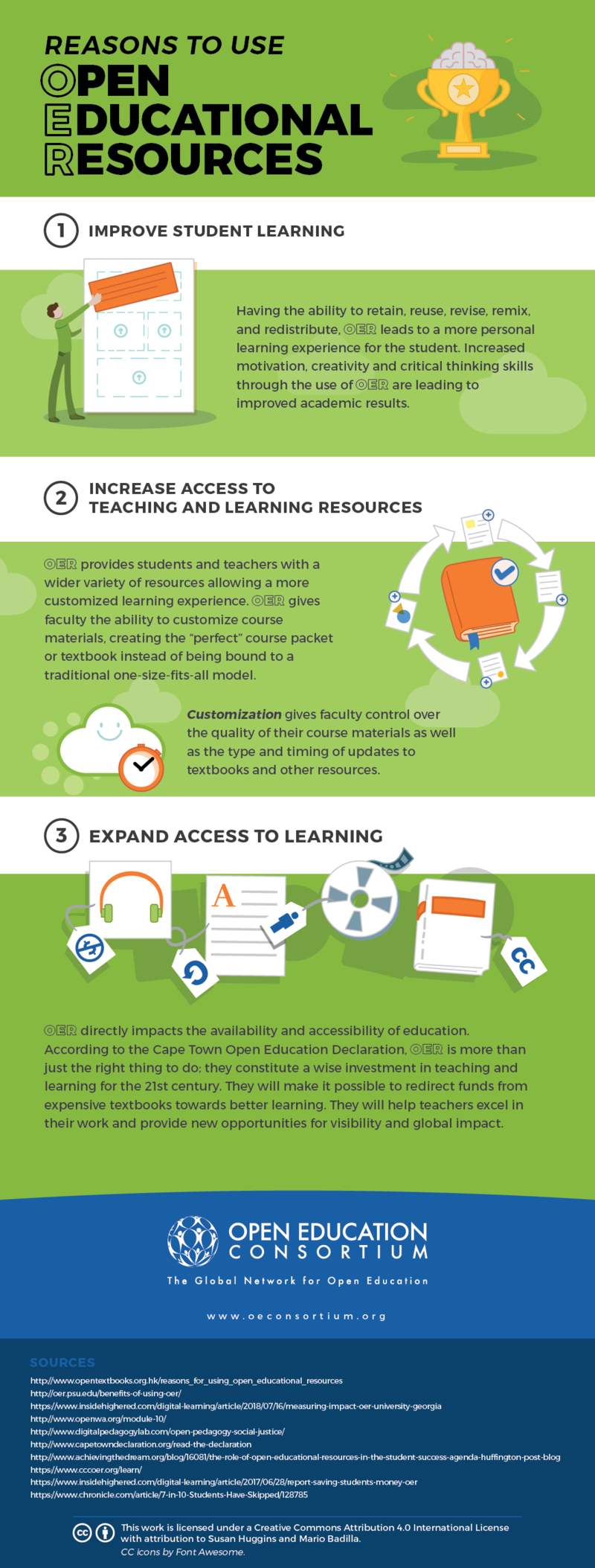Eleni Tsaireli’s Updates
Open Source Education
Ubiquitous learning is the idea of learning anytime, anywhere. In the Web2.0 era, online search engined turn out a lot of material that is sometimes hard to evaluate as a learner. One of the current concepts that needs further examination is that of Open educational resources (OERs)
Open education is a philosophy about the way people should produce, share, and build on knowledge.OERs are learning materials that can be modified and enhanced because their creators have given others permission to do so. The individuals or organizations that create OERs—which can include materials like presentation slides, podcasts, syllabi, images, lesson plans, lecture videos, maps, worksheets, and even entire textbooks—waive some (if not all) of the copyright associated with their works, typically via legal tools like Creative Commons licenses, so others can freely access, reuse, translate, and modify them.
Applying open licenses to educational materials allows educators to collaborate when building materials specifically differentiated for their students. For example, a mathematics teacher might acquire openly-licensed word problems for her students, but re-write the exercises to include language that is more geographically specific or demographically relevant. In turn, she can share her modified problems with others who may wish to use them.
Probably the most well-known open source example is that of Wikipedia, that is an online encyclopedia where the content is created, updated and reviewed by its users. One of the main challenges is how to search for the open source content. On the internet there are millions of resources for any given subject. Therefore the learner needs to have developed critical thinking in order to evaluate them and pick the right ones in their learning process.
Finally in times of crisis like the current Covid-19, it is becoming more obvious how scientist need open source data. Holders of intellectual property rights need to cooperate in order to support the development of medicines, test kits, vaccines, and other scientific discoveries related to COVID-19 for the duration of the pandemic.


